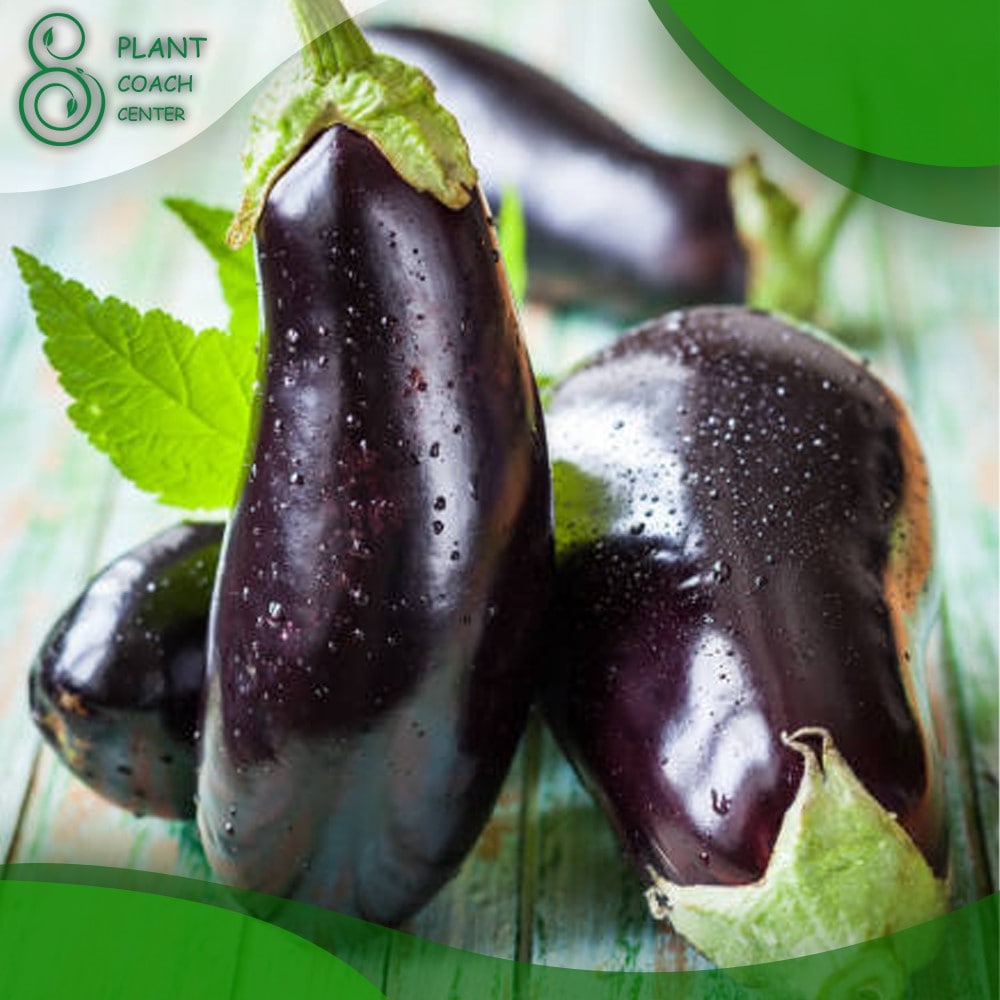When to Plant Eggplant Seeds
Introduction to when to plant eggplant seeds
Eggplants, with their vibrant colors and delicious flavors, are a popular addition to many home gardens. Growing eggplants from seeds allows gardeners to select from a wide variety of cultivars and experience the joy of nurturing a plant from its earliest stages.
In this comprehensive guide, we will explore the best practices for planting eggplant seeds, troubleshooting common problems, and ensuring a successful harvest. For additional resources and support, visit [PlantCoachCenter.com] (https://www.plantcoachcenter.com), your go-to destination for plant coaching expertise.
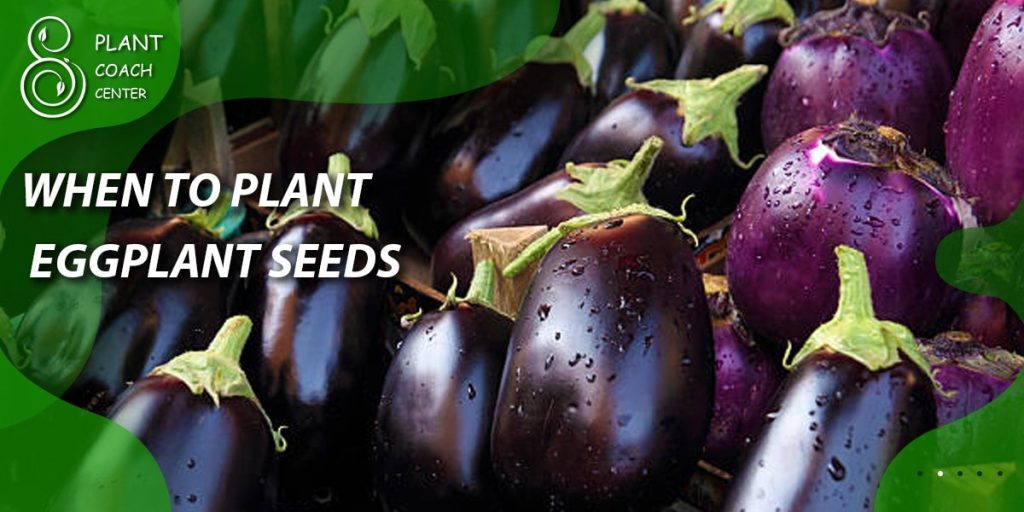
Understanding Eggplant Seed Planting Times
Planting eggplant seeds at the right time is crucial for optimal growth and development. Several factors influence when to plant eggplant seeds, including climate, hardiness zones, and temperature requirements. By understanding these factors, you can determine the best time to sow your eggplant seeds and ensure favorable conditions for germination and growth.
Factors Influencing Planting Times
– Climate and Hardiness Zones: Eggplants thrive in warm climates, so it’s important to consider your specific region’s climate and hardiness zone before planting. This information can help you determine the average frost dates, growing season length, and the suitable time for planting eggplant seeds.
– Frost Dates and Growing Seasons: Eggplants are highly sensitive to frost, so it’s crucial to plant them after the danger of frost has passed. Knowing the average last frost date in your area will help you time your planting correctly. Additionally, consider the overall length of your growing season, as eggplants require a sufficient amount of time to mature before the onset of cold weather.
– Temperature Requirements for Eggplant Seed Germination: Eggplant seeds have specific temperature requirements for optimal germination. They typically prefer soil temperatures between 70-90°F (21-32°C). If the soil temperature is too cool, the seeds may not germinate or may germinate slowly, leading to poor seedling establishment. Wait until the soil has warmed up adequately before sowing your eggplant seeds.
Determining the Best Time for Planting Eggplant Seeds
To determine the ideal time for planting eggplant seeds, consider the following steps:
- Research your local climate and hardiness zone information to understand the specific growing conditions in your area.
- Determine your region’s average last frost date and calculate the number of weeks or months before this date when you should start your eggplant seeds indoors.
- Take into account the seed germination time, usually around 7-10 days, and the desired size and maturity of the seedlings before transplanting them outdoors.
- Consider the recommended soil temperature for eggplant seed germination and ensure that the soil has adequately warmed up before sowing the seeds.
By considering these factors and timing your eggplant seed planting accordingly, you can give your seeds the best chance of success.
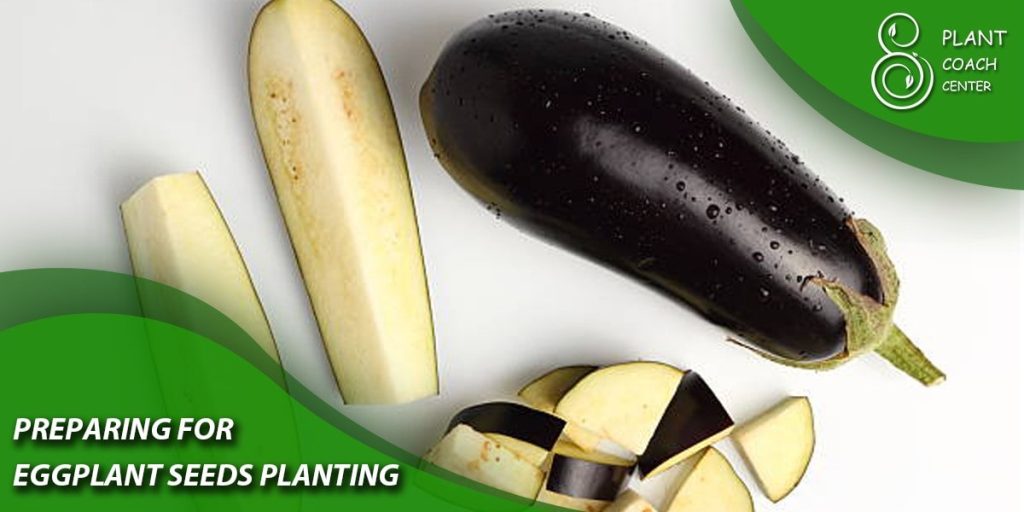
Preparing for Eggplant Seed Planting
Proper preparation is essential to ensure successful eggplant seed planting. Before you sow your seeds, take the following steps to set the stage for strong and healthy seedlings:
Seed Selection and Quality Assessment
– Choose high-quality eggplant seeds from reputable suppliers or save seeds from previous successful crops.
– Check the seed packet or label for the seed’s viability and expiration date to ensure they are fresh and viable.
– Conduct a germination test with a small sample of seeds to determine their viability before sowing them on a larger scale.
Seed Starting Techniques
There are two primary methods for starting eggplant seeds: indoor seed starting and direct seed sowing. Choose the method that suits your preferences and growing conditions.
Indoor Seed Starting
– Start indoor seedlings approximately 6-8 weeks before the anticipated transplanting date.
– Fill seed trays or containers with a sterile seed-starting mix, providing a well-draining and nutrient-rich medium for seed germination.
– Sow the eggplant seeds at the recommended depth (usually around ¼ inch) and lightly cover them with soil.
– Place the seed trays in a warm location (70-85°F or 21-29°C) and ensure they receive adequate sunlight or fluorescent grow lights.
– Maintain consistent soil moisture by watering gently and avoiding overwatering or letting the soil dry out completely.
– As the seedlings emerge and grow, provide adequate airflow and gradually introduce them to outdoor conditions to harden them off before transplanting.
Direct Seed Sowing
– Direct seed sowing is suitable for regions with longer growing seasons and favorable outdoor conditions.
– Wait until the soil temperature reaches the recommended range (70-90°F or 21-32°C) for successful germination.
– Prepare the planting area by loosening the soil, removing any weeds or debris, and incorporating organic matter or compost to improve soil fertility.
– Sow the eggplant seeds at the appropriate depth and spacing, following the instructions on the seed packet.
– Cover the seeds with soil, lightly firming it down to ensure good seed-to-soil contact.
– Water gently after planting to settle the soil aroundthe seeds.
Soil Preparation and Amendments
Preparing the soil before planting is crucial for providing the eggplant seeds with a nutrient-rich and well-draining environment. Consider the following steps:
– Test the soil pH and make adjustments if necessary. Eggplants prefer slightly acidic soil with a pH range of 5.5-6.5.
– Incorporate organic matter, such as compost or well-rotted manure, into the soil to improve its structure, fertility, and water-holding capacity.
– Ensure the soil is well-draining to prevent waterlogging, which can lead to root rot and other issues. If the soil is heavy clay, consider adding sand or perlite to improve drainage.
– Remove any weeds, rocks, or debris from the planting area to create a clean growing space for the eggplant seedlings.
Container Selection and Preparation (if applicable)
If you choose to grow eggplants in containers, select appropriate containers that provide sufficient space for root development. Consider the following guidelines:
– Choose containers with drainage holes to prevent waterlogging.
– Select containers that are at least 12-16 inches deep to accommodate the eggplant’s extensive root system.
– Clean and sterilize the containers before use to minimize the risk of diseases or pests.
– Fill the containers with a well-draining potting mix, preferably one specifically formulated for vegetables or container gardening.
By following these preparation steps, you’ll create an optimal environment for your eggplant seeds to germinate and develop into healthy seedlings. In the next section, we will delve into the best practices for planting eggplant seeds.
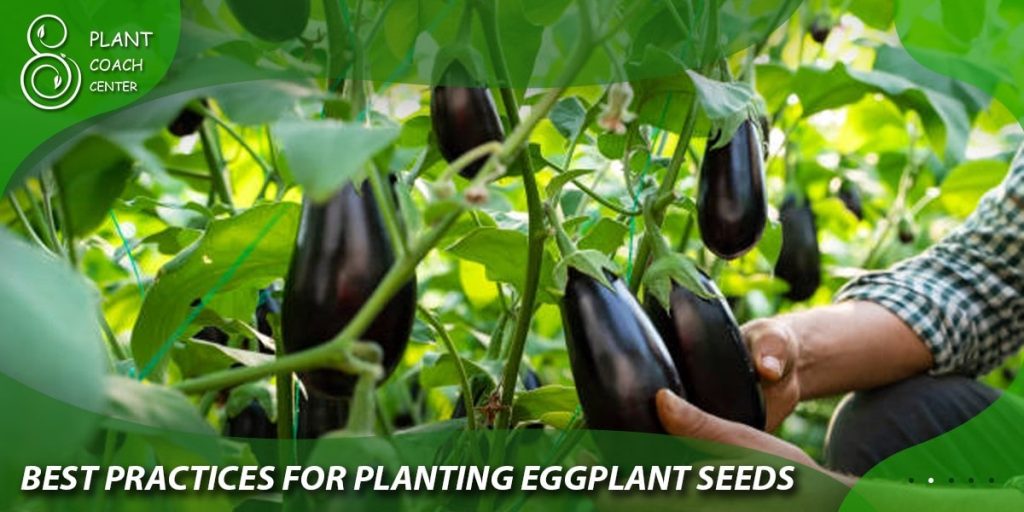
Best Practices for Planting Eggplant Seeds
Once you have prepared the soil or containers, it’s time to plant your eggplant seeds. Follow these best practices to ensure successful seed germination and healthy seedling establishment:
Choosing the Planting Location
Eggplants require full sun exposure to thrive, so choose a planting location that receives at least 6-8 hours of direct sunlight each day. Additionally:
– Ensure the planting area offers protection from strong winds, as eggplants have delicate stems that can break easily.
– Consider neighboring plants and their growth habits to prevent shading or overcrowding of the eggplants.
Preparing the Planting Area
Before planting, prepare the planting area to create an optimal growing environment for the eggplant seedlings:
– Remove any weeds or grass from the planting area, as they can compete with the seedlings for nutrients and water.
– Loosen the soil to a depth of 8-10 inches, breaking up any clumps and creating a loose, friable texture that allows for root penetration and aeration.
– Incorporate additional organic matter or compost into the soil if needed to improve its fertility and structure.
– Smooth the soil surface and create small furrows or planting holes for the seeds, ensuring the appropriate spacing between each hole.
Proper Seed Planting Depth and Spacing
Planting depth and spacing are crucial factors that influence seed germination and subsequent plant growth. Follow these guidelines for optimal results:
– Plant the eggplant seeds at a depth of approximately ¼ inch (6 mm). This allows the seedlings to emerge easily without straining.
– Space the seeds according to the recommended spacing for the specific eggplant variety, typically around 12-18 inches apart. This provides enough room for the plants to grow and allows air circulation, reducing the risk of disease.
Watering and Moisture Management
Proper watering is essential during the seed germination and seedling establishment stages. Consider the following watering guidelines:
– After planting the seeds, water gently to settle the soil around them and ensure good seed-to-soil contact.
– Maintain consistent soil moisture by watering lightly whenever the top inch of soil becomes dry. Avoid overwatering, as it can lead to root rot and other fungal diseases.
– Use a watering can or a gentle spray nozzle to avoid displacing the seeds or damaging emerging seedlings.
– Mulching around the seedlings can help retain soil moisture, suppress weeds, and maintain a more stable soil temperature.
Mulching and Weed Control
Mulching is a beneficial practice for eggplant cultivation, providing numerous advantages such as weed suppression, moisture conservation, and temperature regulation. Follow these guidelines for effective mulching:
– Apply a layer of organic mulch, such as straw, shredded leaves, or wood chips, around the base of the seedlings once they have emerged and established.
– Maintain a mulch thickness of 2-4 inches to prevent weed growth and conserve soil moisture.
– Keep the mulch a few inches away from the stems of the seedlings to prevent moisture-related diseases and rodent damage.
– Periodically check for weeds that may emerge through the mulch layer and promptly remove them to prevent competition for resources.
Fertilizer Application and Nutrient Requirements
Eggplants have specific nutrient requirements to support their vigorous growth and fruit production. Consider the following guidelines for fertilizer application:
– Before planting or sowing the seeds, incorporate a balanced fertilizer or compost into the soil to provide essential nutrients.
– Follow the fertilizer manufacturer’s instructions for application rates, as they may vary depending on the specific product and soil conditions.
– Alternatively, conduct a soil test to determine any nutrient deficiencies or imbalances and adjust the fertilizer application accordingly.
– Avoid excessive nitrogen fertilization, as it can promote vegetative growth at the expense of fruit production. Instead, focus on providing a balanced blend of nutrients.
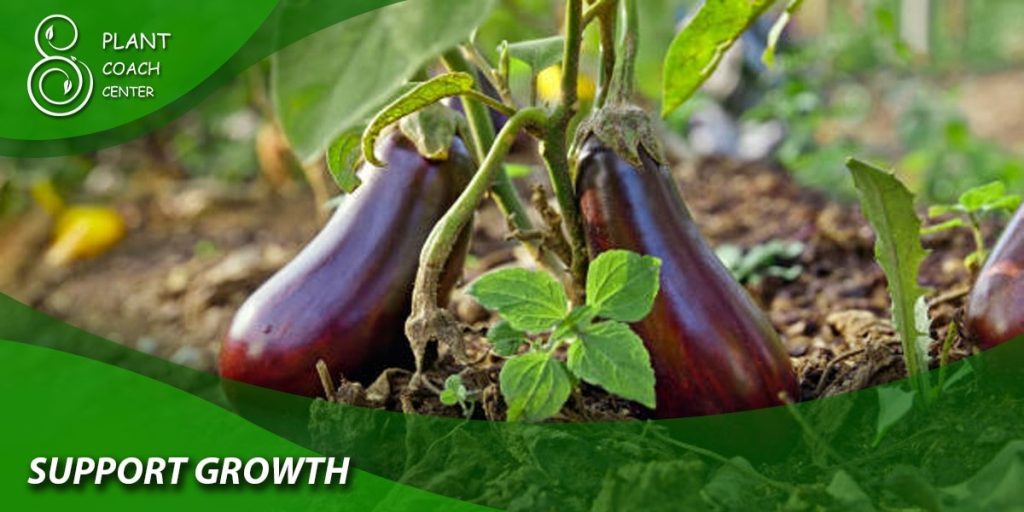
Supporting Seedling Growth and Development
As the eggplant seedlings grow, they may require additional support to ensure healthy development and prevent damage. Consider the following techniques:
– Install stakes or cages around the seedlings to provide support for their stems as they grow taller. This will help prevent breakage, especially during windy conditions.
– Tie the seedlings to the stakes or cages using soft plant ties or twine, loosely securing them without constricting their growth.
– Regularly monitor the seedlings for signs of pests or diseases and take appropriate measures to address any issues promptly.
Transplanting Seedlings Outdoors
Once the seedlings have reached a certain size and the outdoor conditions are favorable, it’s time to transplant them into the garden. Follow these steps for successful seedling transplantation:
– Choose a calm, overcast day or transplant in the late afternoon to minimize stress on the seedlings.
– Dig a hole in the prepared planting area that is slightly larger than the seedling’s root ball.
– Gently remove the seedling from its container, being careful not to damage the roots.
– Place the seedling in the hole, ensuring that the soil level matches the level of the surrounding soil.
– Backfill the hole with soil, gently firming it around the seedling to eliminate air pockets.
– Water the transplanted seedlings thoroughly to settle the soil and provide hydration.
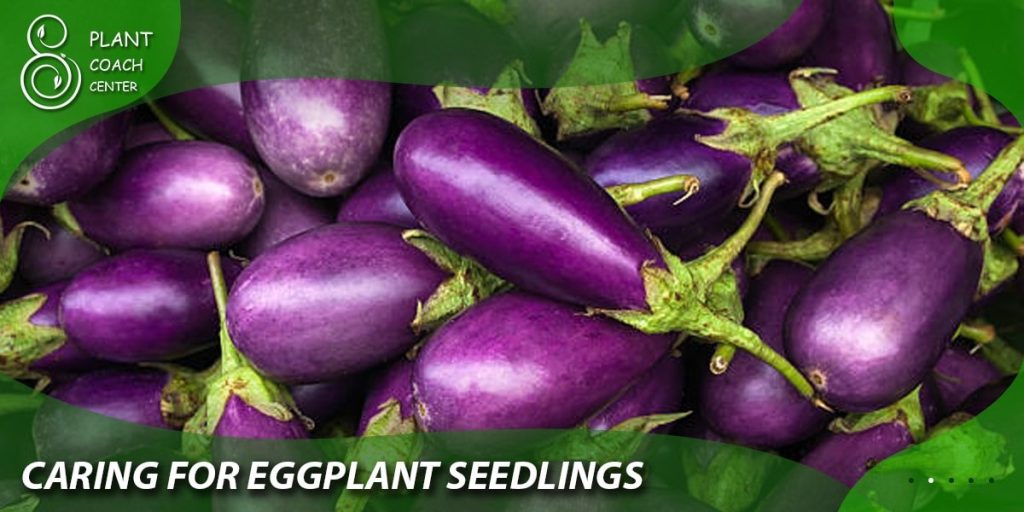
Caring for Eggplant Seedlings
To ensure the healthy growth and development of your eggplant seedlings, it’s important to provide proper care throughout the growing season. Consider the following practices:
Watering: Eggplants require consistent moisture, especially during dry periods. Water deeply and regularly, aiming to keep the soil evenly moist without waterlogging. Avoid overhead watering, as wet foliage can increase the risk of diseases.
Mulching: Maintain a layer of mulch around the base of the plants to conserve soil moisture, suppress weeds, and regulate soil temperature. Organic mulches, such as straw or wood chips, are excellent choices.
Fertilization: Apply a balanced fertilizer or organic compost according to the plant’s nutrient needs. Follow the recommended application rates and timing to provide essential nutrients for healthy growth and fruit production.
Pruning: Regularly inspect the plants for suckers or excess foliage that may divert energy from fruit production. Prune these suckers or excess branches to promote better airflow and focus the plant’s energy on fruit development.
Pest and Disease Management: Monitor the plants for signs of pests and diseases, such as aphids, flea beetles, or fungal infections. Employ organic pest control methods, such as handpicking, companion planting, or using insecticidal soaps when necessary.
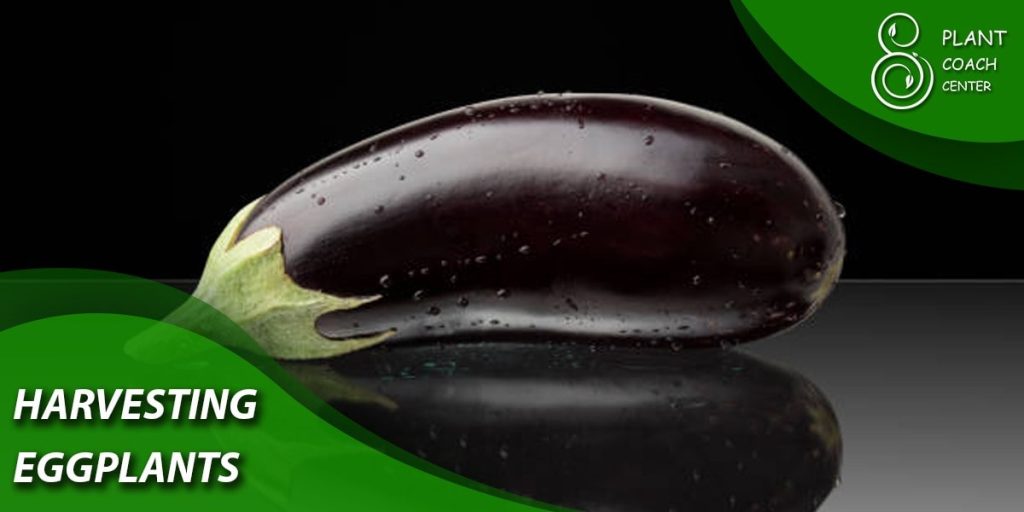
Harvesting Eggplants
As the eggplants mature, it’s important to harvest them at the right time to enjoy their optimal flavor and texture. Follow these guidelines for successful eggplant harvesting:
– Check the seed packet or variety information to determine the expected size and color of ripe eggplants.
– Harvest the eggplants when they reach the desired size and color but before they become overripe or start to develop a dull appearance.
– Use sharp pruners or a knife to cut the eggplants from the plant, leaving a short stem attached.
– Handle the harvested eggplants carefully to avoid bruising or damaging the delicate skin.
Conclusion
Growing eggplants from seeds can be a rewarding experience for gardeners, allowing them to enjoy the delicious fruits of their labor. By understanding the factors influencing planting times, preparing the soil or containers properly, and following best practices for seed planting, watering, fertilization, and care, you can cultivate healthy eggplant seedlings and ensure a successful harvest.
For further guidance and resources on plant coaching, visit [PlantCoachCenter.com] (https://www.plantcoachcenter.com) to enhance your gardening skills and knowledge. Happy eggplant cultivation!
When should I plant eggplant seeds?
Spring.
Can I plant eggplant seeds in summer?
Yes.
Is it okay to plant eggplant seeds in fall?
No.
Can I sow eggplant seeds indoors?
Yes.


